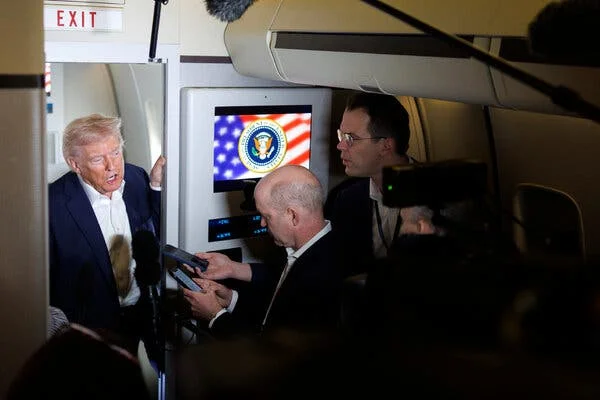
Trump Orders Military Takeover of Southern Border Lands in Sweeping Security Push
The U.S. southern border is set for a dramatic transformation after President Donald Trump issued memoranda authorizing the military to assume unprecedented control over federal lands along the border with Mexico. Framing the order as a response to a declared national emergency and a need to curb unlawful entry, the move marks one of the administration's boldest steps yet in blending national security and immigration policy—a controversial strategy with potentially far-reaching legal and operational implications.

Under the directives, Secretary of Defense Pete Hegseth and three other cabinet secretaries are charged with transferring jurisdiction over the Roosevelt Reservation—a 60-foot-wide federal strip running through California, Arizona, and New Mexico—to the Department of Defense. The Pentagon will have authority to designate this border strip as a military installation, enabling deployment of troops, construction of border barriers, and installation of surveillance equipment, as well as the power to temporarily detain migrants for trespassing until Border Patrol agents arrive.
The memoranda formalize what had been circulating among policymakers and reported in outlets like CNN and The New York Times for weeks. Migrants intercepted in these zones would be held in new “military installation” holding areas—a move that treads a thin legal line, given the Posse Comitatus Act forbids the military from engaging in direct domestic law enforcement. By designating the area a military facility, officials may bypass such limits through nuanced definitions of military jurisdiction and new rules for engagement, established by Secretary Hegseth. Critics, such as Adam Isacson from the Washington Office on Latin America, caution that this approach blurs the distinction between law enforcement and military operations, citing the “quasi-military” nature of planned migrant detention.

Notably, Trump’s directive excludes Federal Indian Reservations from military jurisdiction, but it gives the Secretaries of the Interior and Agriculture extraordinary powers to adjust public land withdrawals without customary legal constraints. Implementation will begin in select sectors, with the Defense Department authorized to expand the plan as needed. Within 45 days, an assessment is due, potentially paving the way for wider military involvement.
The memoranda also open the door to activation of state National Guard units and emphasize cooperation across agency lines. However, as Department of Defense officials and White House spokespeople have yet to provide specifics on detainment protocols, signage, or military training adjustments, significant logistical and humanitarian questions loom—especially as border crossings have already declined markedly since Trump’s return to office.
With the southern border increasingly resembling a militarized zone, the U.S. heads into uncharted territory both politically and operationally. Will these emergency measures prove effective and lawful, or exacerbate tensions and legal challenges regarding the role of armed forces at home? The answers—and their ramifications—are likely to fuel debate for months to come.
What are your thoughts on the military’s new role at the border? Leave your comment below and join the conversation.